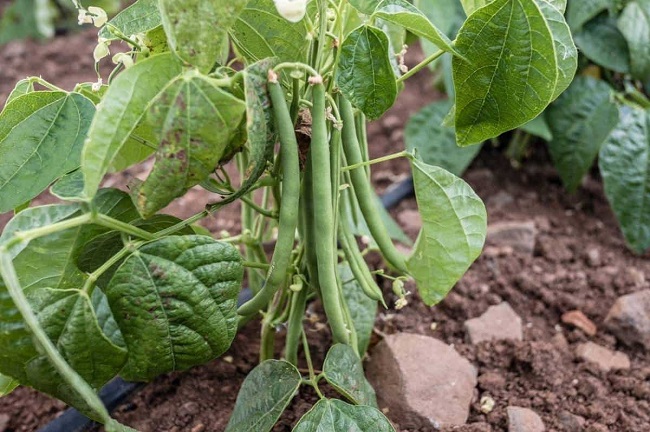
Green beans, also known as snap beans or string beans, are believed to have originated in South America, specifically in what is now Peru. They were first cultivated by indigenous peoples in the region and were an important food source for many centuries.
Green beans were introduced to Europe by Spanish explorers in the 16th century and quickly became popular throughout the continent. They were brought to North America by European settlers in the 17th century and became a staple crop in many regions.
Early varieties of green beans had a tough, fibrous “string” running down the side of the pod that needed to be removed before cooking. In the early 20th century, new varieties were developed that were “stringless,” making them easier to prepare and more palatable.
Today, green beans are grown and consumed all over the world, and they are available in many different varieties, including snap beans, pole beans, and bush beans. They are a versatile vegetable that can be steamed, sautéed, roasted, or eaten raw in salads. Green beans are also a good source of fiber, vitamin C, and other essential nutrients.
How to Grow Green Beans
Lots of Sun
Choose a sunny location with well-draining soil. Green beans need at least 6 hours of sunlight per day and prefer soil that is rich in organic matter.
Planting
Plant green bean seeds in the spring after the danger of frost has passed. Sow seeds directly into the soil, about 1 inch deep and 2-3 inches apart. If you are planting pole beans, install a trellis or other support system for the plants to climb.
Moist Soil but Don’t Overdo It
Keep the soil moist but not waterlogged. Green beans require consistent moisture to grow well.
Fertilize Them
Fertilize the plants with a balanced fertilizer every 4-6 weeks. Green beans are moderate feeders, so be sure to give them enough nutrients to support their growth.
Pest Control
Watch out for common pests and diseases, such as aphids, bean beetles, and powdery mildew. Consider using organic methods to control these problems, such as companion planting or spraying with neem oil. Read this article to learn more about companion planting and read this article for more information on neem oil.
Harvesting
Harvest green beans when they are about 4-6 inches long and firm to the touch. Cut them off the vine with a sharp knife or pruning shears.
9 Fun Facts About Green Beans
Green beans are also known as string beans or snap beans, and they are a member of the legume family.
Green beans are a good source of vitamins and minerals, including vitamin C, vitamin K, vitamin A, folate, and potassium.
The green bean is one of the few vegetables that is harvested when it is still immature, before the seeds inside have fully developed.
The term “string bean” comes from the fibrous string that used to run along the seam of the pod, which needed to be removed before cooking.
Green beans come in a variety of colors, including green, yellow, and purple.
French green beans, also known as haricot verts, are a thinner and more delicate variety of green bean that is often used in gourmet cooking.
Green beans were originally cultivated in South America, but they have been grown and eaten in many parts of the world for centuries.
The largest producer of green beans in the world is China, followed by Indonesia, Turkey, and Egypt.
Green beans are a versatile vegetable that can be eaten cooked or raw, and they can be prepared in many ways, including steaming, roasting, sautéing, and blanching.
Related Articles & Free Email Newsletter Sign Up
How to Make a Homemade Flower Press



Comment here